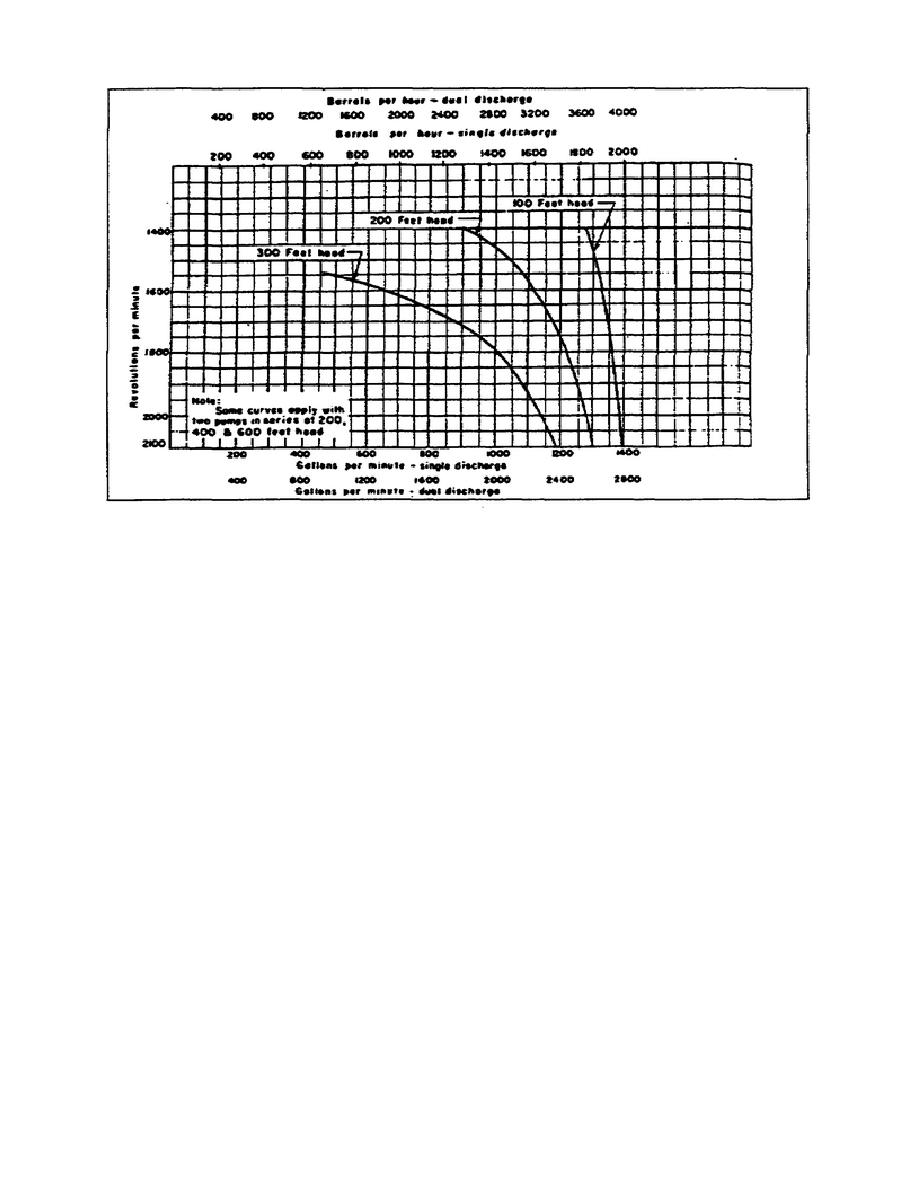
Figure 7.
Operating characteristics of 6-inch, two-stage booster pump at
constant head conditions
d. Individual pump stations must regulate pump speed (pressure) to keep
suction pressures above the minimum at the next pump station downstream. It
is desirable that pump station suction pressure be 20 PSI for elevations
less than 5,000 feet and for temperatures below 100F (20 PSI is equivalent
to 64 feet of military gasoline (MOGAS) head). If the temperature exceeds
100F or 5,000 feet elevation, then the minimum suction pressure will be 30
PSI. The minimum suction pressure at a pump station must be 5 PSI because
of pump-entrance friction losses and the possibility of vapor lock in the
pump (5 PSI is equivalent to 16 feet of MOGAS head).
The net discharge
pressure of the pump is determined by using the pump graph for the specific
rate or an operating pressure is given to you. The total discharge pressure
is determined by simply adding the suction pressure and the net discharge
pressure.
Parallel Problem:
Given:
Suction at each pump
=
20 PSI
Total discharge
=
150PSI
Flow at each pump
=
160 GPM
Fuel
=
DF2
Find:
Net PSI for each pump
Net FTH each pump
Total discharge in FTH
Flow after pump station
QM5201
14



 Previous Page
Previous Page
